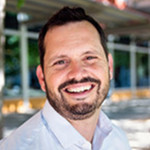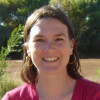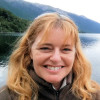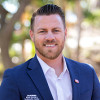Wednesday, April 24, 2024
10:00am – 12:00pm
Pre-Forum Workshop (for Utility and Government Attendees Only)
Paul Reid, Azusa Light & Water & Amber Rockwell, City of Banning Electric Utility
Candid roundtable discussion on current issues, including these highest-ranked responses to a recent survey of registrants:
- Creative or Unique Low-Income Programs
- Impacts of Electrification/Decarbonization on Customers and Their Electric Bills
- New Ways to Achieve Energy Savings Goals with Increased Building Standards
12:00pm – 1:00pm
Lunch Buffet - hosted by Brighton Energy
12:45pm – 1:00pm
First-timer Orientation and Welcome
1:00pm – 1:15pm
Welcoming Remarks
Mary Medeiros McEnroe, Silicon Valley Power
1:15pm – 2:15pm
Opening Keynote
Benjamin Finkelor, UC Davis Energy and Efficiency Institute - Presentation
 Utilities, and the customer programs they create and implement, are critical for equitably achieving society’s needed clean energy transition. UC Davis (along with other researchers and universities) is partnering with utilities and is training the workforce to develop and deliver compelling and reliable solutions and advancing new technologies and best practices that can be scaled. Our emphasis is on how energy integrates with the customer experience, which is in many ways focused of “non-energy benefits,” and while energy efficiency is always at the core of what we do, we also increasingly integrate contributions that can be made towards reliability, load flexibility, and decarbonization.
Utilities, and the customer programs they create and implement, are critical for equitably achieving society’s needed clean energy transition. UC Davis (along with other researchers and universities) is partnering with utilities and is training the workforce to develop and deliver compelling and reliable solutions and advancing new technologies and best practices that can be scaled. Our emphasis is on how energy integrates with the customer experience, which is in many ways focused of “non-energy benefits,” and while energy efficiency is always at the core of what we do, we also increasingly integrate contributions that can be made towards reliability, load flexibility, and decarbonization.
2:15pm – 2:45pm
Networking Break and Energy Quiz
Quiz Emcee: Mark Gosvener, Efficiency Services Group
2:45pm – 4:10pm
Strategic/Policy View
Katie Cort, PNNL & Ron Horstman, WAPA
This year’s session will focus on policies and strategies to better serve disadvantaged communities. Meeting ambitious carbon reduction goals will require that energy efficiency and building decarbonization programs reach everyone, including populations traditionally underserved by utility programs. This session will discuss both policies and strategies to better serve ALL communities.
- Dr. Ebony Mayhorn, PNNL
- Nicolas Garcia, WPUDA - Presentation
- Jhenny Saint-Surin, Eversource Energy



4:10pm – 4:15pm
Quick Break
4:15pm – 5:15pm
Meet the Exhibitors - Presentation
Mark Gosvener, Efficiency Services Group & Adrianne Rogers, City of Colton Electric Utility
5:15pm
Adjourn
5:15pm – 6:15pm
Reception
Signature cocktail sponsored by Automated Energy
6:30pm
Dinner (Country & Western Theme Night)
8:00pm
Networking Event & Game
Unwind at a casual gathering with hot beverages to reflect on the day's discussions and engage in a fun networking game designed to get to know one another. Prizes are available.
Thursday, April 25, 2024
7:30am – 8:30am
Breakfast Buffet
8:30am – 9:45am
User-Centered Research: Influencing Decision-Making and Behavior
Eric Xu, PG&E & Mary Medeiros McEnroe, Silicon Valley Power
- The Decarbonization Melting Pot: Regional Study of Household Preferences and Technology Uptake
Tracey Fuentes, PNNL - Presentation
- Building Trust and Demonstrating Value: Addressing the Human Side of the Great Deployment
Jes Rivas, Illume - Presentation
- Call a Therapist! How Psychology Can Help with Electrification
Edy MacDonald, SMUD



9:45am – 10:15am
Networking Break with Energy Quiz
Quiz Emcee: Mark Gosvener, Efficiency Services Group
10:15am – 11:00am
Utility Program Stand-up Challenge – Round 1
Cheri Davis, SMUD & Kamryn Hutson, City of Redding Electric Utility
Join us for the craziest round of concurrent sessions ever! Imagine speed dating meets the lightning round of a TV game show! Visit up to 4 storyboards detailing utility-sponsored energy programs or research. Each storyboard presenter has up to 5 minutes (plus up to 7 minutes for Q&A) to share with you the program’s goals, successes and lessons learned. A bell rings, you choose another storyboard, and the 12-minute clock starts again.
- Realizing the promises of the IRA - HVAC Commissioning
Christian Valoria, Pacific Northwest National Laboratory - Poster
The Inflation Reduction Act (IRA) presents a significant opportunity to decarbonize and enhance efficiency in homes nationwide by offering incentives for heat pumps and other efficiency measures. To fulfill the promises of efficiency, improved comfort, and utility bill savings, it is imperative to ensure the correct installation of these HVAC systems. Research findings reveal that 70-90% of residential central air conditioners and air source heat pumps are installed improperly, resulting in energy-wasting faults. To protect consumers from the high rates of installation faults the U.S. Department of Energy (DOE) has established quality assurance requirements for HVAC systems installed through the IRA-funded rebate programs. This poster session will introduce various quality installation initiatives and tools your contractors can utilize to commission residential HVAC systems.
- The Home and Commercial End Use Metering Studies in the Pacific Northwest Region
Graham Parker, Northwest Energy Efficiency Alliance (NEEA) - Poster
Accurate information on building end use loads is crucial to effective energy efficiency planning, load forecasting, rate-making, demand response, and integrated resource planning. The Pacific Northwest Region residential and commercial buildings End Use Load and Consumer Assessment Project (ELCAP) (1985-1990) was used as a highly valuable planning resource for decades, but technological and socioeconomic changes have gradually made much of that information outdated. In response, the Northwest End Use Load Research (EULR) Project was initiated in 2017 by NEEA, consisting of the Home Energy Metering Study (HEMS) and the Commercial Energy Metering Study (CEMS). The project is collecting metered end uses and temperature data at 1-minute and 15-minute intervals for 400 homes and 70 commercial buildings located in four states (OR, WA, ID, MT) and three climate zones. The 15-minute interval data are available at no cost to the public and has been downloaded over 350 times by universities, consultants, utilities, national laboratories, and government agencies. It has been used for energy efficiency planning, transmission planning, building model calibration, and analyzing a summer super peak.
- SMUD's eFuel Services helps Sacramento businesses prepare for the Electric Vehicle future!
Jack Haglund and Louie Dias, Sacramento Municipal Utility District - Poster
SMUD eFuel® is a full-service program to assess, design, construct and maintain electric vehicle chargers for commercial and multi-family customers interested in electric vehicles and EV charging. The program delivers a turnkey program in two components, eFuel Advisor (no-cost reports to help you build a customized electrification plan) and eFuel Solutions (SMUD manages entire EV infrastructure project including procuring EV chargers and equipment, grid upgrades and connection, and maintenance and operations). This session will cover the successes and lessons learned by SMUD eFuel since its inception in 2021.
-
Pre-Attentive Color Schemes to Enhance Customer Responsiveness to TOU Rates
Ivy So, APTIM, and Mark S. Martinez, Southern California Edison - Poster
In the evolving landscape of time of use (TOU) and RTP rate reforms, one utility is pioneering a solution to confront barriers of low customer response and awareness by leveraging the science of Pre-Attentive Notifications (PAN). Explore how SCE and Flick Power innovatively employ visual cues to be processed at the subconscious level and encourage TOU customers to make daily load shifts. This poster explores a research field-study at SCE that examines the effectiveness of utilizing color via an unobtrusive light switch as a catalyst for customer engagement, enhancing response to time-based electric rate signals. Amidst a sea of technological distractions, there is need for such strategic tools to capture attention and promote behavioral shifts in energy consumption. From a case study across 200+ residences, this assesses deployment of color to inform customer awareness of TOU pricing and empower residents toward bill savings- demonstrating an approach conducive for long-term behavior change and load shaping.
-
Economic Development Rate Discount Program
Astrida Trupovnieks, City of Lodi - Poster
All across the nation, the public and private sectors are placing great emphasis on job creation. Public utilities are no exception. How can a hometown utility sustain its revenue and also be perceived as supporting the strategic objective of attracting industry to the region? The simple answer to this question is incentive rates. Lodi Electric’s Economic Development Rate provides a monthly discount on consumption based on the number of net, new full-time jobs created. This discount can last for up to five years. The incentive rate promotes a broader relationship based on business growth and prosperity, not just power quantity and quality. Check out this poster to see how hometown municipal utilities like Lodi Electric are well-positioned to drive economic development through innovative rate designs.
11:00am - 12: 00pm
 Midpoint Keynote: Why does equity matter? Addressing the needs of our most vulnerable customers.
Midpoint Keynote: Why does equity matter? Addressing the needs of our most vulnerable customers.
Quinn Parker, Encolor - Presentation / Video 1 / Video 2
As an industry, we recognize the importance of ensuring all customers have equitable access to the benefits of the clean energy transition. While this outcome is something we agree on in concept, we continue to struggle to meet the needs of our most vulnerable customers in action. For many of us 'vulnerable' means frontline, disadvantaged, or marginalized. But to really address the needs of our most vulnerable customers, we need to specifically design for all. This includes customers with varying abilities, experiencing limited incomes, and our senior communities. In this session we'll discuss practical solutions and tactics we can all implement immediately as we develop programs that address the needs of all customers and result in truly equitable outcomes.
12:00pm – 1:00pm
Lunch Buffet
1:00pm – 2:00pm
Utility Program Stand-up Challenge – Round 2
Cheri Davis, SMUD & Kamryn Hutson, Redding Electric Utility
Join us for the craziest round of concurrent sessions ever! Imagine speed dating meets the lightning round of a TV game show! Visit up to 4 storyboards detailing utility-sponsored energy programs or research. Each storyboard presenter has up to 5 minutes (plus up to 7 minutes for Q&A) to share with you the program’s goals, successes and lessons learned. A bell rings, you choose another storyboard, and the 12-minute clock starts again.
- Promoting EV Charging in Multifamily New Construction - A POU Case Study
Terrence O'Sullivan and Lauren Cady, San Francisco Public Utilities Commission - Poster
The new construction phase of multifamily and commercial new construction projects is the easiest and least expensive time to add electric vehicle charging infrastructure. Installing EV chargers, outlets and related equipment can create a vital clean energy asset - or a missed opportunity - at every site. So why aren't developers doing more of it? What are the specific barriers to EV infrastructure investments that new construction projects need to overcome? What does "future-proofing" look like? How should utilities and developers think about EV infrastructure when the project is affordable housing? SFPUC's EV Charge SF program illustrates how one city (acting as both a POU and a CCA) has developed and operated an incentive and technical assistance program focused on this key stage in building development and the lessons learned along the way.
- Inland Solar Challenge
Cecilia Griego, City of Colton Water Utility - Poster
Colton Electric and Water Utilities sponsor the Inland Solar Competition (ISC), which gathers high school students from across the Inland Empire to build and race sixteen-foot boats equipped with solar technology. This three day event, held at Yucaipa Regional Park, includes an endurance, slalom and sprint race. In the months before the event, teams must prepare two technical reports and a Public Service Announcement that is presented at the event. The ISC provides an educational platform for students to showcase their successes to prospective universities while improving their utility's relationship with the community they serve. Colton Electric & Water Utilities' use of the ISC is one way they develop their next leaders as they work with their local school district and community colleges to discuss career paths and trade programs that will benefit the utilities. Attendees will learn how a region of small utilities utilized a small educational event to build strong relationships with their communities' teachers and students that fosters growth in the sciences while gaining advocates for the work we do.
-
Regional Bottoms-Up Forecasting
Lauren Klun, National Renewable Energy Laboratory - Poster
The U.S. Department of Energy’s National Renewable Energy Laboratory has created a free, publicly available dataset that provides foundational baseline energy consumption profiles and potential impacts of electrification and energy efficiency upgrade scenarios for the U.S. building stock. The data sets identify where energy is being consumed geographically, in what building types and end uses, and at what times of day. ComStock™ and ResStock™ are highly granular, bottom-up models that use multiple data sources, statistical sampling methods, and advanced building energy simulations to estimate the annual sub-hourly energy consumption of the building stock across the United States. See how utilities can use this data to analyze and forecast possible shifts in energy consumption under various “what-if” energy efficiency and electrification upgrade scenarios.
-
Breaching the GSHP Affordability Issue with Community Partners
Sam Simonett and Esteban Montero Chacon, Homes for Good Public Housing Authority - Poster
Within the past decade, Ground Source Heat Pumps (GSHP) have propelled themselves to the forefront of the clean energy conversation due to extremely high-performance records and federal support of the technology. While it may seem counterintuitive, this technology may provide a path for electrifying our most sensitive communities. Armed with grant funding, Homes for Good, Northwest Natural, and Geonomic Developments Inc. partnered on a pilot in the Pacific Northwest to install GSHPs for single-family homes in a lower income neighborhood. The goals of the pilot were to lower the residents’ energy burden by 50% and reduce their reliance on gas while providing year-round comfort. This poster will showcase the effectiveness of this community partnership in delivering cutting-edge energy technology directly to those with the greatest need.
-
Transitioning California to Efficient Rooftop HVAC Units (ERTUs)
Rick Dunn, CalMTA - Poster
RTUs are single-zone forced-air systems that package evaporators, condenser coils, fans, and heating components into a single unit to serve a building’s heating, cooling, and ventilation needs. Over two-thirds of commercial buildings in California are conditioned by RTUs, the vast majority of which are gas-powered. In response, CalMTA’s market transformation initiative was developed to drive adoption of more efficient electric heat pump ERTUs while engaging the supply chain to implement design improvements that can deliver an estimated 10–40% energy savings beyond the minimum required by existing codes. The ERTU program will identify and address market barriers to the adoption of ERTUs including product design and performance, capital costs, and contractor/installer knowledge. This poster will summarize the CalMTA strategy and planned interventions for accelerating market adoption of ERTUs.
2:00pm – 3:30pm
Technology View
Eric Olson, NEEA & Mark Martinez, SCE
- SCE’s Vehicle-Grid-Integration Roadmap and Industry Overview
Blake Heidenreich, SCE - Presentation
- Advanced Heat Pumps – Emerging Capabilities
Christopher Dymond, NEEA - Presentation
- Commercial Secondary Windows: Solutions for the Existing Window Problem.
Mike Hatten, Solarc Energy Group, LLC - Presentation



3:30pm – 4:00pm
Networking Break and Energy Quiz
Quiz Emcee: Mark Gosvener, Efficiency Services Group
4:00pm – 5:15pm
Customer View
Kapil Kulkarni, California Public Utilities Commission and Mary Medeiros McEnroe, Silicon Valley Power
- Value Chain Emissions: Salesforce Sustainability Exhibit & Green Code
Amanda von Almen, SalesForce - Presentation
- Cal Poly: Decarbonizing in a period of rapid growth
Chad Worth, Cal Poly San Luis Obispo - Presentation
- Transitioning to Electric Vehicles for Home Service Industries
Michael Prencavage, Jr., The Family Plumber - Presentation



5:15pm – 6:15pm
Reception
6:30pm
Dinner and Team Trivia Game
8:00pm
Wine Tasting & Networking
Friday, April 26, 2024
7:30am – 8:30am
Breakfast Buffet
8:30am – 10:00am
Upscaling the Workforce to Support Utility Initiatives
Ron Horstman & Scott Mayfield
- The Challenges and Solutions to Securing Long-term Skilled Trade Professionals
Mike Prencavage Jr., President/Owner The Family Plumber & Director of Business Development for the Plumbing Heating and Cooling Contractors Association - Presentation
- Workforce Development - Creating Pathways to High Wage Opportunities
Jake Pollack, Strategic Energy Innovations - Presentation
- Training the Distribution Workforce
Phil Markham, EPRI (Electric Power Research Institute) - Presentation



10:00am – 10:30am
Networking Break with Energy Quiz
Quiz Emcee: Mark Gosvener, Efficiency Services Group
10:30am – 12:00pm
Utility Programs Snapshot
MaryDawn Buntin, Kittitas PUD & Adrianne Rogers, City of Colton Electric Utility
- Evolution of Distribution-focused DERMs - Implementation to a Regional Virtual Power Plant
Mary Horsey, City of Fort Collins – Utilities - Presentation
- Building Electrification for Low-income Customers: Unique Challenges and Opportunities
Bryce Dias, PG&E - Presentation
- Unconventional Methods for Customer Engagement
Monique Hampton, Turlock Irrigation District - Presentation



12:00pm
Adjourn
12:00pm – 1:00pm
Lunch